The Best Preserved Stretches of C&S ROW
123



















123
The Best Preserved Stretches of C&S ROW
|
Being relatively familiar with the Denver to Kenosha segment, I will submit that the grade between Cliffdale and Estabrook, known as Upper Platte or Estabrook's Canyon, has the best preserved ROW along that stretch. The Estabrook station house still remains as does an original building at Cliffdale which is seen photographs of that area. Both Cliffdale and Estabrook are private property, however the 5 mile stretch between the two is all National Forest land except for a small inholding at Crossons. Bridges, ties, spikes, nuts, bolts, telegraph poles and even the occasional rail can be found along the grade here. Undisturbed by a road, the rock cuts are exactly as they were when the railroad came through.
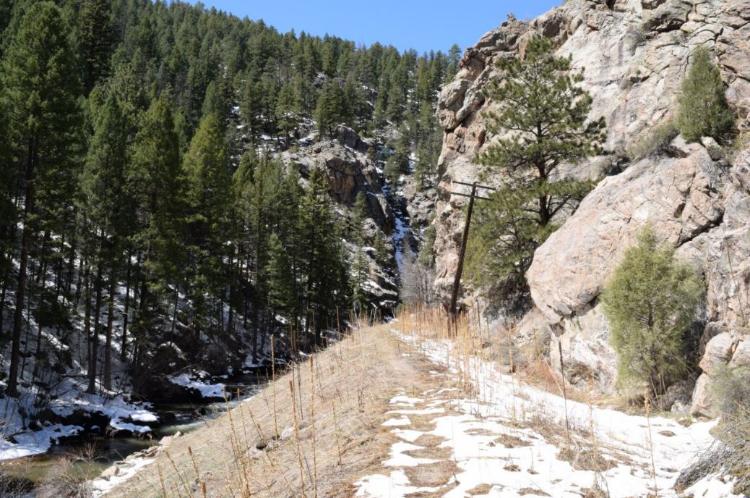  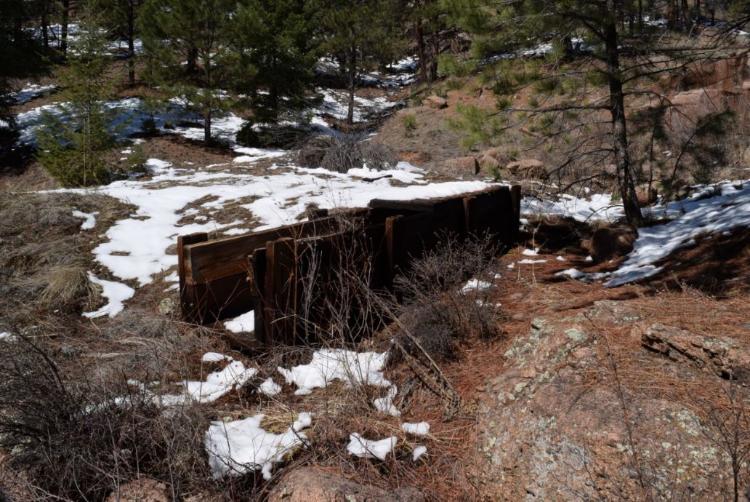 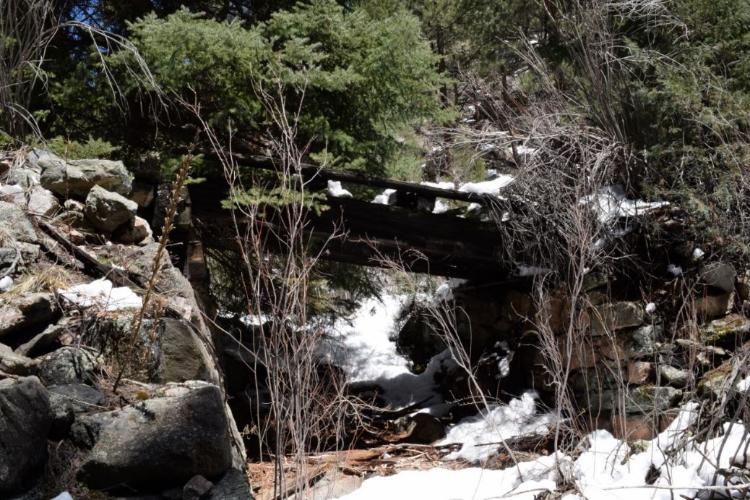  What are your thoughts on other portions of C&S ROW that are well preserved? |
Re: The Best Preserved Stretches of C&S ROW
|
Great photos, Daniel.
There are some bits around Red Hill, and in Trout Creek Canon that are fairly well preserved. Sadly I’ve got no pictures. Cheers, Jeff. |
Re: The Best Preserved Stretches of C&S ROW
|
This post was updated on .
In reply to this post by Daniel Frauenhoff
Estabrook depot still stands??
 Circa 1910 Is there access to the depot for photos / measurements or is the depot, like the straining truss wood bridge, on private property? I'd love to hike through Estabrook canon on my next trip to visit my sister-in-law at Pine. When I drove to Estabrook on the road from Baileys, everything at that location was fenced off. I could see the west entrance to the canon, but had no idea to access it. How do you access the trail in the canon? As to my favorite location, I'd have to say Kenosha Summit. The view is spectacular, and the partially rebuilt tail track of the wye gives a sense of what it was like to turn helpers there on a beautiful summers day. You can pretty much walk the three track passing sidings, and the mainline all the way down to the little lake. Maps show a jeep road or trail from the Hall's Valley bridge site all the way up the old C&S grade above Hwy 285. Have you hiked this segment? Jim PS Post more photos of Eastabrook canon; the color views will be very helpful for scenery building.
Jim Courtney
Poulsbo, WA |
Re: The Best Preserved Stretches of C&S ROW
|
In reply to this post by Daniel Frauenhoff
Thanks for the input, Jeff. I will certainly try to hike those areas this summer.
Jim: Regarding the Estabrook Depot. I have not seen it myself but I am quite certain it does remain; albeit on private property. My information comes from the DSP&P historical society page which includes two photographs of the area from their 2012 Bailey convention. According to their page: "Sunday morning was spent touring what's left of Estabrook. The group was generously hosted by Michael and Suzanne Van Hall, who opened their home for our catered box lunch. Several folks also walked remnants of the grade, which is on their property." http://dspphs.org/2012-Convention.html Perhaps someone who attended said convention has photographs they could post? Regarding access to the grade in between Cliffdale and Estabrook; it is unfortunately very limited. From what I can tell there are only two ways to reach the area without crossing private lands and both are quite arduous. I started off at Pine Valley Ranch Park and hiked west until the established trail ended. I then travelled about 1.5 miles further west bushwhacking through the forest and bypassing the private land at Cliffdale before descending into the canyon. Fording the river finally placed me on the ROW. The other option is to drive a few miles east of Estabrook to FR 553 and follow it to FR 552. FR 552 used to terminate at Crossons but it was closed and gated roughly 3.5 miles to the south following the 2002 Hayman fire. The best course would be to park at the gate and bike along the road to Crossons, though this would also require fording the river in order to reach the grade. Note that I have not attempted this option. I have indeed hiked some of the ROW near Kenosha Pass. I will post some photos of that stretch soon. Daniel |
Re: The Best Preserved Stretches of C&S ROW
 Hmmm . . . "bush wacking through 1.5 miles of forest" . . . "fording the river" . . . perhaps I'll just depend on you for color views of Estabrook Canon! Hmmm . . . "bush wacking through 1.5 miles of forest" . . . "fording the river" . . . perhaps I'll just depend on you for color views of Estabrook Canon!
DPL has a few B&W photos of the canon; any of these look familiar from your expeditions? http://digital.denverlibrary.org/cdm/singleitem/collection/p15330coll22/id/44029/rec/1002  http://digital.denverlibrary.org/cdm/singleitem/collection/p15330coll22/id/44032/rec/1187  http://digital.denverlibrary.org/cdm/singleitem/collection/p15330coll22/id/44034/rec/1392  http://cdm16079.contentdm.oclc.org/cdm/singleitem/collection/p15330coll22/id/12476/rec/199  Did you hike as far west as the "Horseshoe Curve"? If so, are the abutments for the pin connected truss bridge still there? Jeff has inspired me.
Jim Courtney
Poulsbo, WA |
Re: The Best Preserved Stretches of C&S ROW
|
Jim, the top two Otto Perry photos are very close to the first image in my original post. I did not quite reach horseshoe curve as it was getting late. When I return it will likely be in the form of a camping trip allowing me more time to explore and get the correct lighting for 'then and now' images. Unfortunately, I only discovered the Otto Perry view you posted after my first trek. Perhaps I will bring a measuring tape along to get dimensions for you modeler types next time I'm out; I believe the abutments are still there.
Daniel |
Re: The Best Preserved Stretches of C&S ROW
|
When I return it will likely be in the form of a camping trip . . .
Be sure to pitch your tent at the same spot as in the last photo, though I doubt the wagon bridge is still there. This would be my idea of camping out at Crossons, a la McClure, c1910: http://digital.denverlibrary.org/cdm/fullbrowser/collection/p15330coll22/id/78391/rv/singleitem  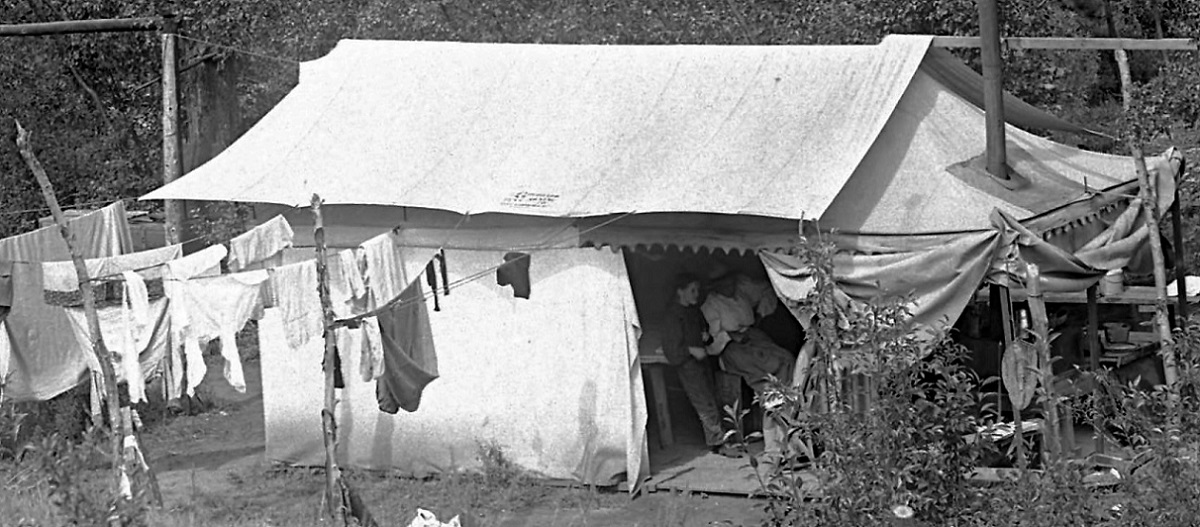 Of course, with the railroad gone, it would be a bit like Out of Africa -- I'd need at least a half-dozen bearers to bush wack the stuff thru the forest and ford the river . . .
Jim Courtney
Poulsbo, WA |
Re: The Best Preserved Stretches of C&S ROW
|
In reply to this post by Jim Courtney
> Eastabrook depot still stands??
Yes it does however it is being used as a house on private property and has been modified. Ken |
Re: The Best Preserved Stretches of C&S ROW
|
In reply to this post by Daniel Frauenhoff
Photographs of the ROW just east of Kenosha Pass between MP 71-73. Travelling downgrade.
 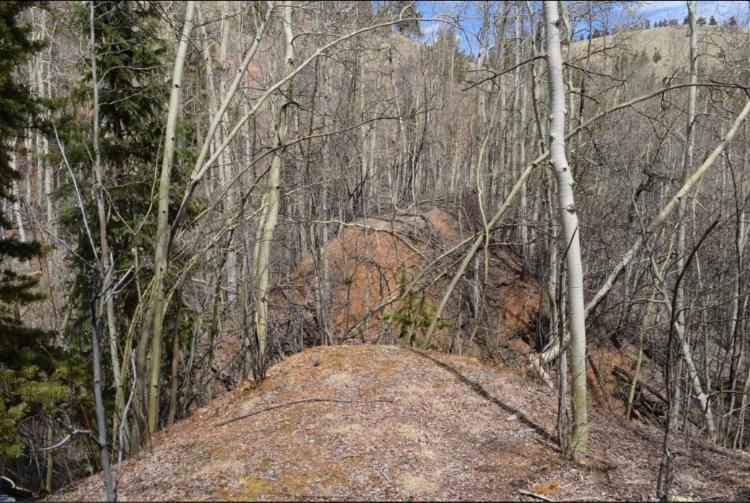 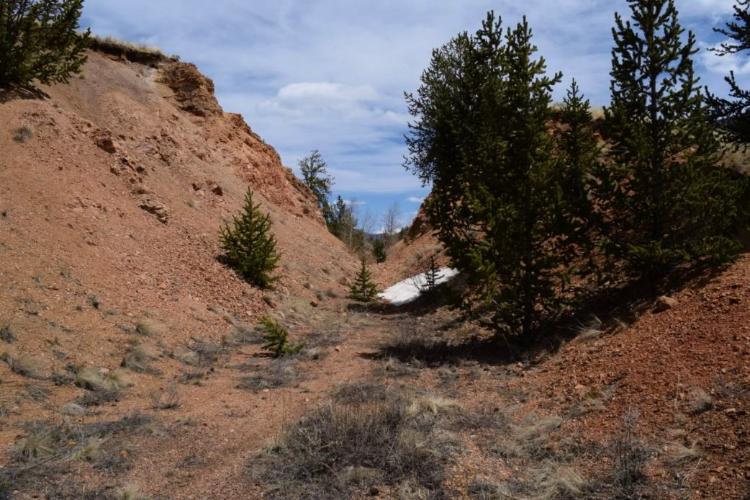  Daniel |
|
In reply to this post by Daniel Frauenhoff
Hello Group, new member here that has been lurking for quite some time.
Daniel's pictures recently inspired me to hike into the upper Platte canyon via Crossons. I tried to get into the canyon from the north, but it's all private property. The hike to Crossons is easy, it follows a road. A couple cabins are still standing at Crossons:  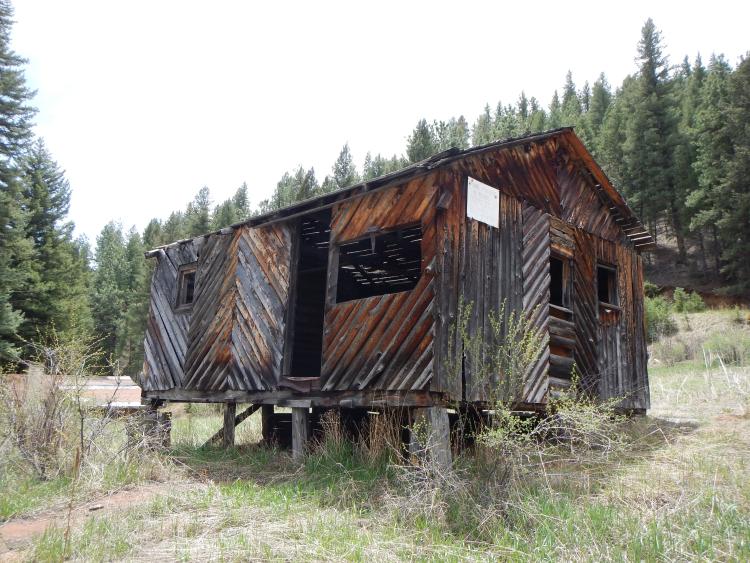 And I stumbled across the remains of a water wheel  The railroad grade is on the other side of the river, but the bridge is partially washed out and the river was raging due to runoff, so I decided not to cross it since I was by myself (and didn't see anybody in the canyon all day). Guess I'll try again later in the year. 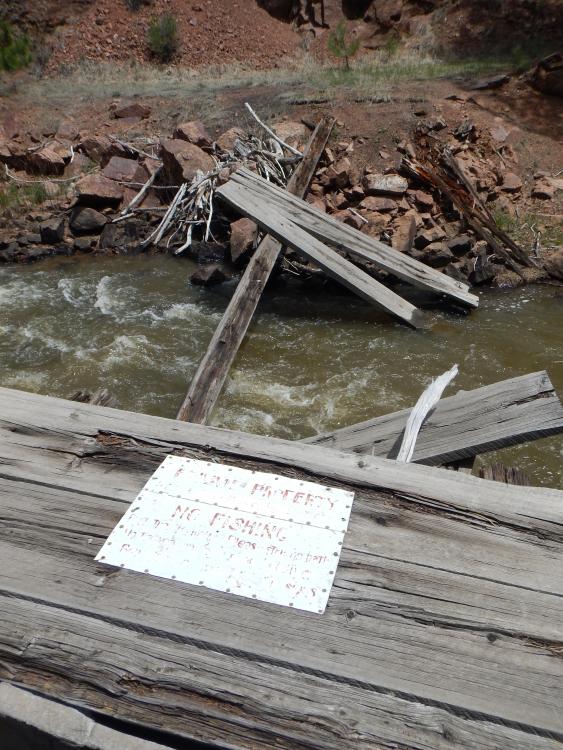 The railroad grade on the other side. So close yet so far away... 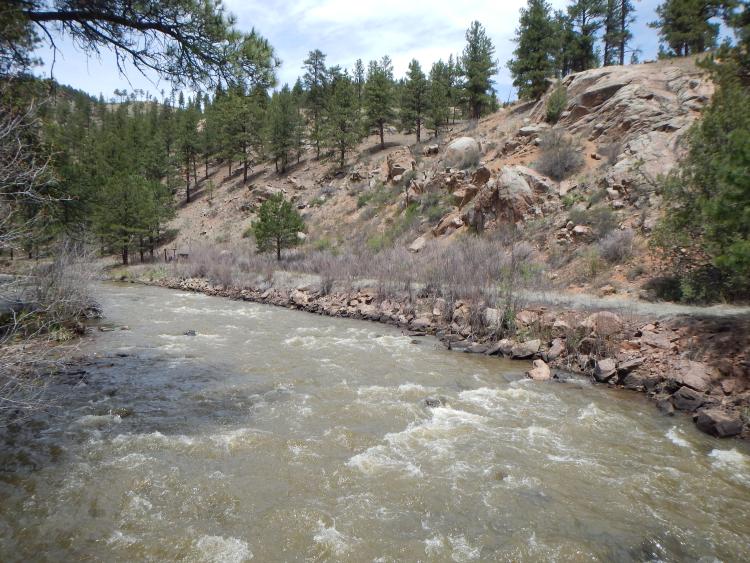  So I explored the southern side of the canyon and stumbled across some mine openings and the ruins of the Saxonia Smelting&Refining works. The brick foundation, some tunnels and the smoke stack built along a rock face can still be seen.  The terrain is pretty rough with lots of cliffs right to the river's edge so it was an exhausting hike climbing over those cliffs on faint animal trails. But this also led me to some nice view points. 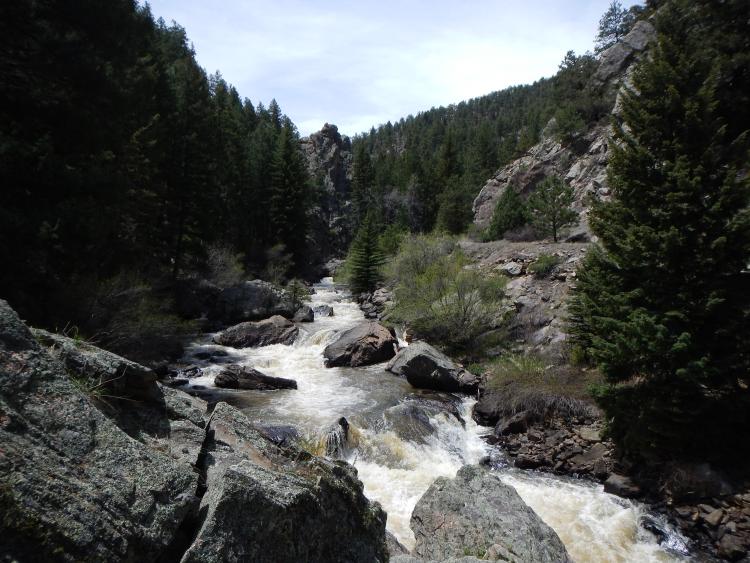  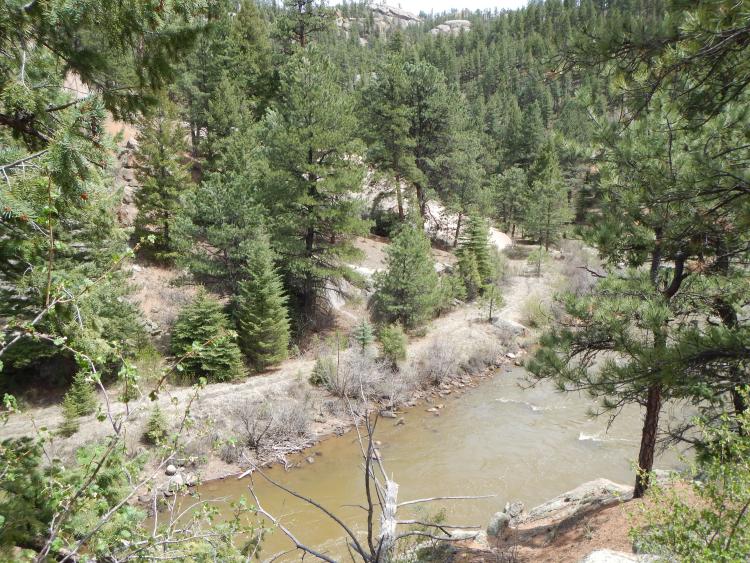   A cut. 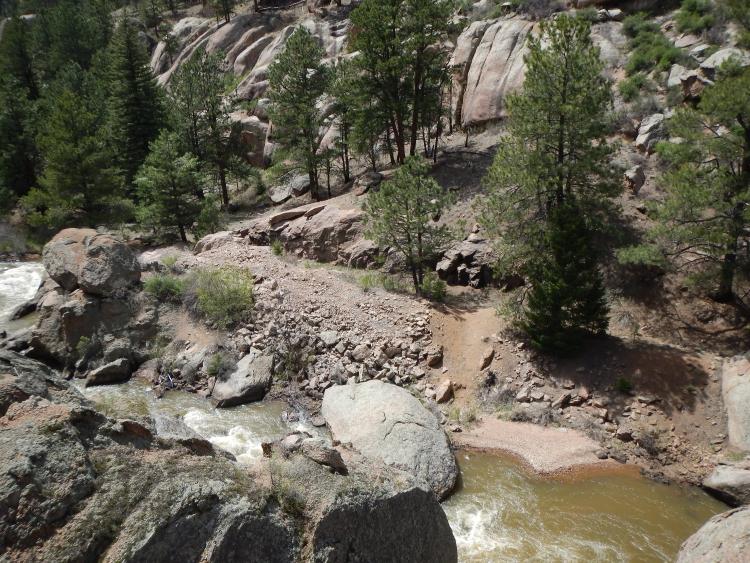 Just upstream from Crossons are the remains of a dam or intake with a pipe. Could this have supplied a water tower? 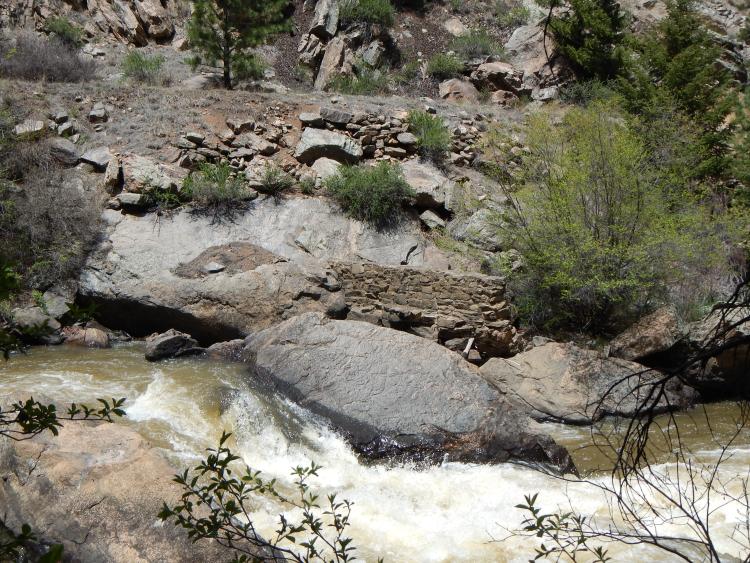 Some of the telegraph poles that followed the railroad grade still hang on to the cliffs. 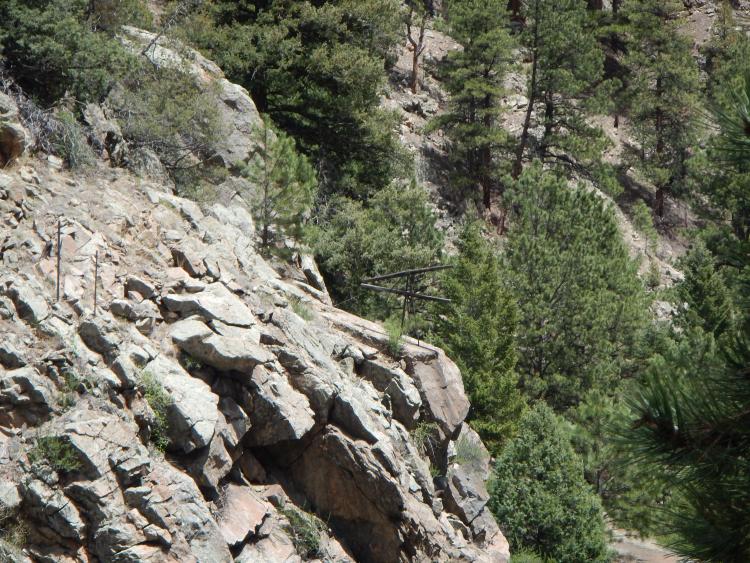  In areas the right of way is washed out.  After getting cliffed out to the west and to the east I bushwhacked back to the car, back to civilization and current times with mountainbikers camping at the trailhead and guys shooting at who knows what... Overall it was a nice hike in a scenic and secluded area and I'll be back when water levels go down. This also depends on Denver Water and the flow through the Roberts tunnel from Dillon Reservoir. The tunnel would have been much easier to operate, avoiding Kenosha and Boreas passes ;o) |
Re: The Best Preserved Stretches of C&S ROW
|
Welcome Alex, and I must say, absolutely great stuff! Glad to see someone else has made it out to Crossons. Very interesting to see more of the area; the side with the RR grade only has one structure and it appears to be the most recent.
Here is the bridge as seen from the other side from when I was there in April:  And a view of the remains of the intake structure: 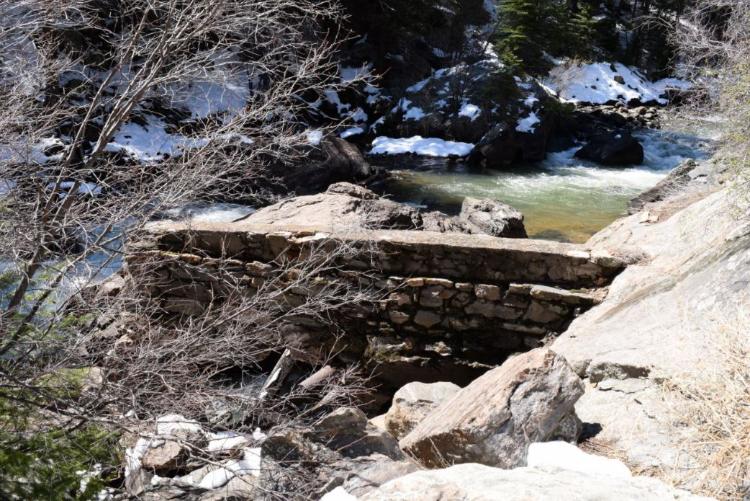 I am inclined to agree that it did serve the water tower which was relocated to Crossons from Deer Creek and Arch Rock at some point before 1918. Can someone provide a more exact date? The ICC evaluation map shows a "4" C.I Pipe Line" running from the area of the rock structure to the Crossons tank. Your photos have convinced me that this is most certainly an area that warrants further investigation on either side of the river. Daniel |
Re: The Best Preserved Stretches of C&S ROW--Crossons
|
This post was updated on .
Alex! No more lurking! Post more photos!
The intake structure was to feed the watering station later established at Crossons. In DSP&P days there was a tank at Deer Creek (as viewed through Arch Rock): http://digital.denverlibrary.org/cdm/singleitem/collection/p15330coll22/id/76190/rec/2  c1885 By the 1890s, during the DL&G period, a simple stand pipe was located at Crossons, like the one at Fisher on the eastern approach to Alpine tunnel. The stand pipe was likely gravity fed from the pipe/intake you describe. 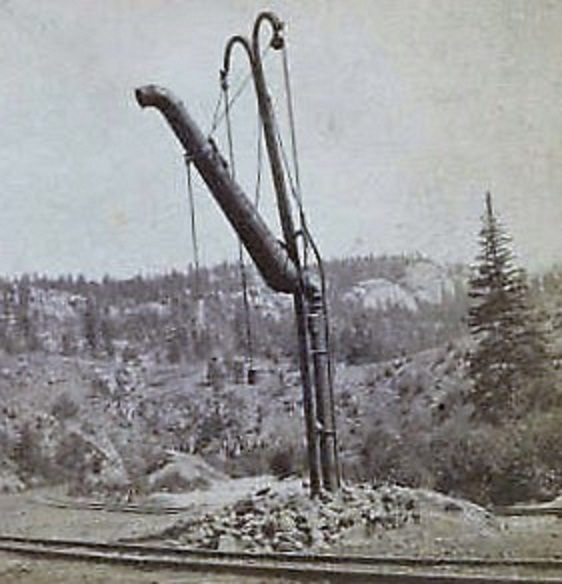 The water plug was located in the wide space on the curve between the mainline and the siding. You are looking back toward the campsite in the above McClure photo. 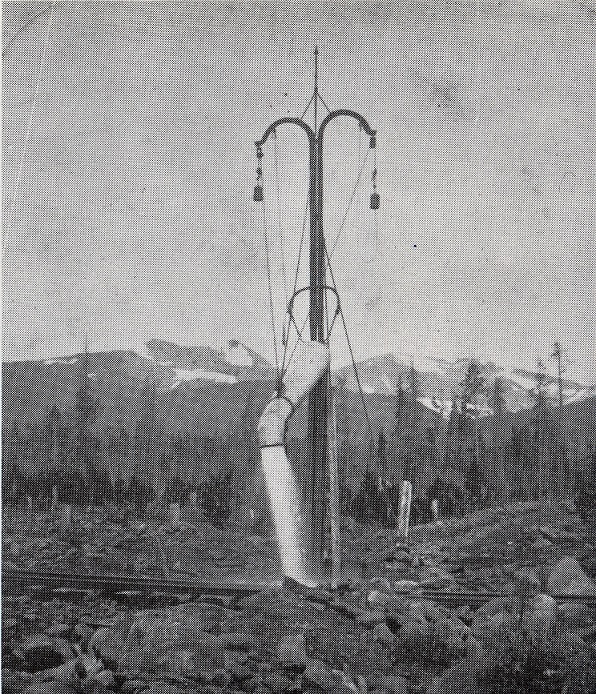 The water pipe at Fisher was identical in most respects, except it seems to be equipped with a lightning rod! By early C&S days, 1900 or before, a true water tank of 47,500 gallons was built here, fed by the same pipe:  The valuation map Daniel cited shows the pipe feeding the later tank: 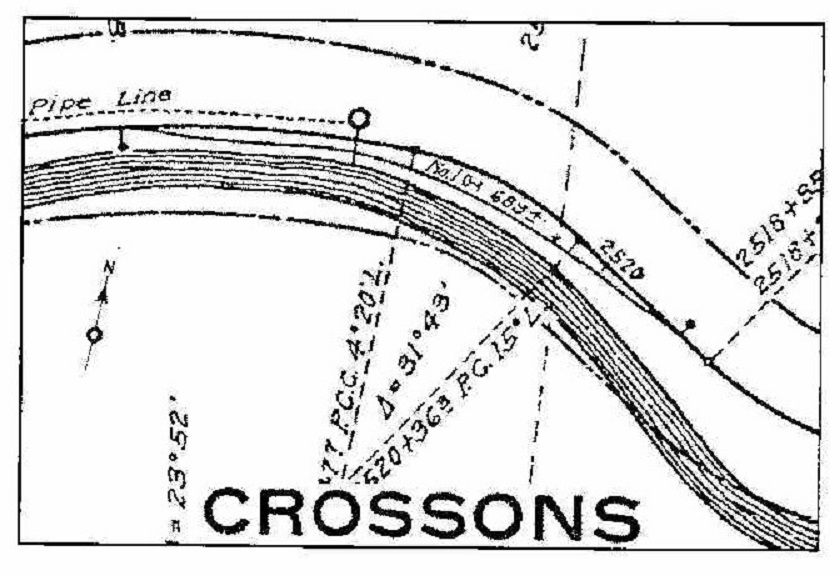 From the Klingers' Platte Canon Memories . . .
Jim Courtney
Poulsbo, WA |
Re: The Best Preserved Stretches of C&S ROW--Crossons
|
This post was updated on .
CONTENTS DELETED
The author has deleted this message.
Jim Courtney
Poulsbo, WA |
Re: The Best Preserved Stretches of C&S ROW--Crossons
|
Great pictures, Daniel and Alex!
Jim, is that a standing-seam metal roof on the Crossons tank? I don’t think I’ve seen that before on the C&S…. |
Re: The Best Preserved Stretches of C&S ROW--Crossons
|
Jeff,
Metal roof on the Watertanks were at Golden, Smith Hill and Idaho Springs (uptown).
UpSideDownC
in New Zealand |
Re: The Best Preserved Stretches of C&S ROW--Crossons
|
Hi Chris,
I’m not familiar with Smith Hill. Is that on the Clear Creek line? Thanks, Jeff. |
Re: The Best Preserved Stretches of C&S ROW--Crossons
|
Jeff,
Yes, 4.7 miles above Forks' on the Blackhawk Branch of the Clear Creek lines.
UpSideDownC
in New Zealand |
Re: The Best Preserved Stretches of C&S ROW--Crossons
|
This post was updated on .
In reply to this post by Jeff Young
Jim, is that a standing-seam metal roof on the Crossons tank?
I dunno, Jeff, could be. The circular flashing at the peak of the roof, around the filial is certainly metal. For years I thought that the radial ridges on some of the peaked roof tanks were wooden battens, covering the seams of the long tapered planks which formed the radial peaked roof. It always seemed to me that fabricating long, sharply tapered standing seam panels would be a pain in the butt. But, as Chris has posted before, in the early 20th century every railroad had a tin shop for men to fabricate all manner of things out of thin sheet metal. It would make sense for some of the peak roofed tanks along Clear Creek and the lower Platte Canon to have solid metal sheathed roofs -- the summers could be hot and dry, and exposed wooden roofs could be a fire hazard from the embers of passing locomotives. But, the roofs on the water tanks varied almost willy-nilly. Dome Rock, a good ways downstream from Crossons had a flat wooden roof, in both its short and tall iterations, as did Riverview just down stream from Crossons and Webster, way upstream. On Clear Creek, the Forks tank (between Golden and both Smith Hill and Idaho Springs) seemed to have always been flat roofed, after the turn of the century. So that begs another question: Why were some C&S water tanks, in the same vicinity, built with peaked roofs and some with flat roofs?  Jim
Jim Courtney
Poulsbo, WA |
Re: The Best Preserved Stretches of C&S ROW--Crossons
|
This post was updated on .
Jeff and Chris,
Having studied several photos, I'm convinced that the ridges on the water tank roof are wooden battens, not the ridges of a standing seam roof. Consider these two images:  In Digerness, The Mineral Belt Volume II In this 1929 view of the Crossons tank, from the Denver Water Board survey, notice how several battens are either missing, broken and shortened or broken with the lower part askew. I can't imagine how the seams of a metal roof could do that. McClure's 1910 campsite is just beyond the trees to the right. Is the distant bridge over the South Platte the same bridge that Daniel and Alex photographed?? The cabins may be the same ones in Alex's photo. The next trip that either of you guys take to Crossons, please try to get a "Now" shot matching this location in the "Then" era. Then heading over to Clear Creek: 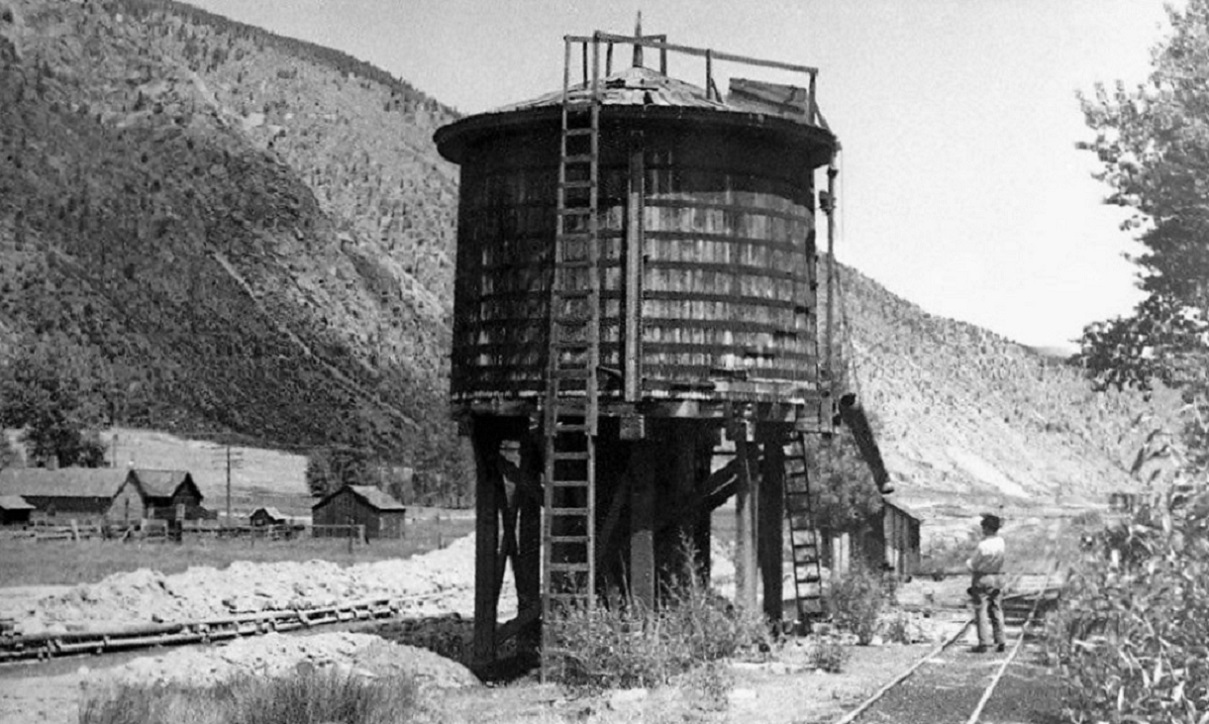 In Abbot, et al, The Colorado Central Railroad The Georgetown tank roof had similar irregular "ridges", that look like wooden battens to me. Jim
Jim Courtney
Poulsbo, WA |
Re: The Best Preserved Stretches of C&S ROW--Crossons
|
This post was updated on .
Jim,
well now you point this out it is hard to tell...you really had to had been there  Given the pictures that aren't on line , that show the I.S. WT roof line better then yes, it looks very much like a full metal roof. As with the Georgetown picture you posted, is defininitely not, given the warpage obviously. On the Golden, Idaho and Smith Hill tanks, the raised central section appears metal, and so does the outer two-thirds. The battens (?) are way too slim in my view compared with known wooden at such locations of Elk Creek. Whether there were composite metal and wood board and battened versions such as the Crossons tank, which for all intent and purpose does reflect that observation. Add into this equation the twist that the 3 locations mentioned in closeup, may just be of a very well maintained wood and metal composite roofing. I'd say the weathertightness around the Finial be at best very difficult to achieve and maintain with tapering Board&Batten, although I'm not even 75% sure that is the case, nobody seemed to get crisp shots that are printed well in large format, at least not at these critical locations. The Best shot ever of IS that shows the roof distinctly is on pg 54, pg 56 and also pg 64, of Mal Ferrell's C&Sng. The outer edge is just too uniform and fine in my view to be wood, unless it was very recently applied. If indeed these examples are wood, then the finish is what I expect from that of a Furniture Craftsman, not anything I've seen from Bridge&Building Carpenters. Perhaps Mal would like to share his picture here? If you have access to the pictures of the 1939 Valuation Survey, picture #47 shows this "fineness" well, picture is on pg318 of Colorado Central Rail Road by Abbott/McLeod. The Smith Hill WT is pictured on pg176 of same and the Authors mentioned the appearance of a metal roof in the caption, which I must say swayed (skewed?) my thinking.
UpSideDownC
in New Zealand |
«
Return to C&Sng Discussion Forum
|
1 view|%1 views
| Free forum by Nabble | Edit this page |

